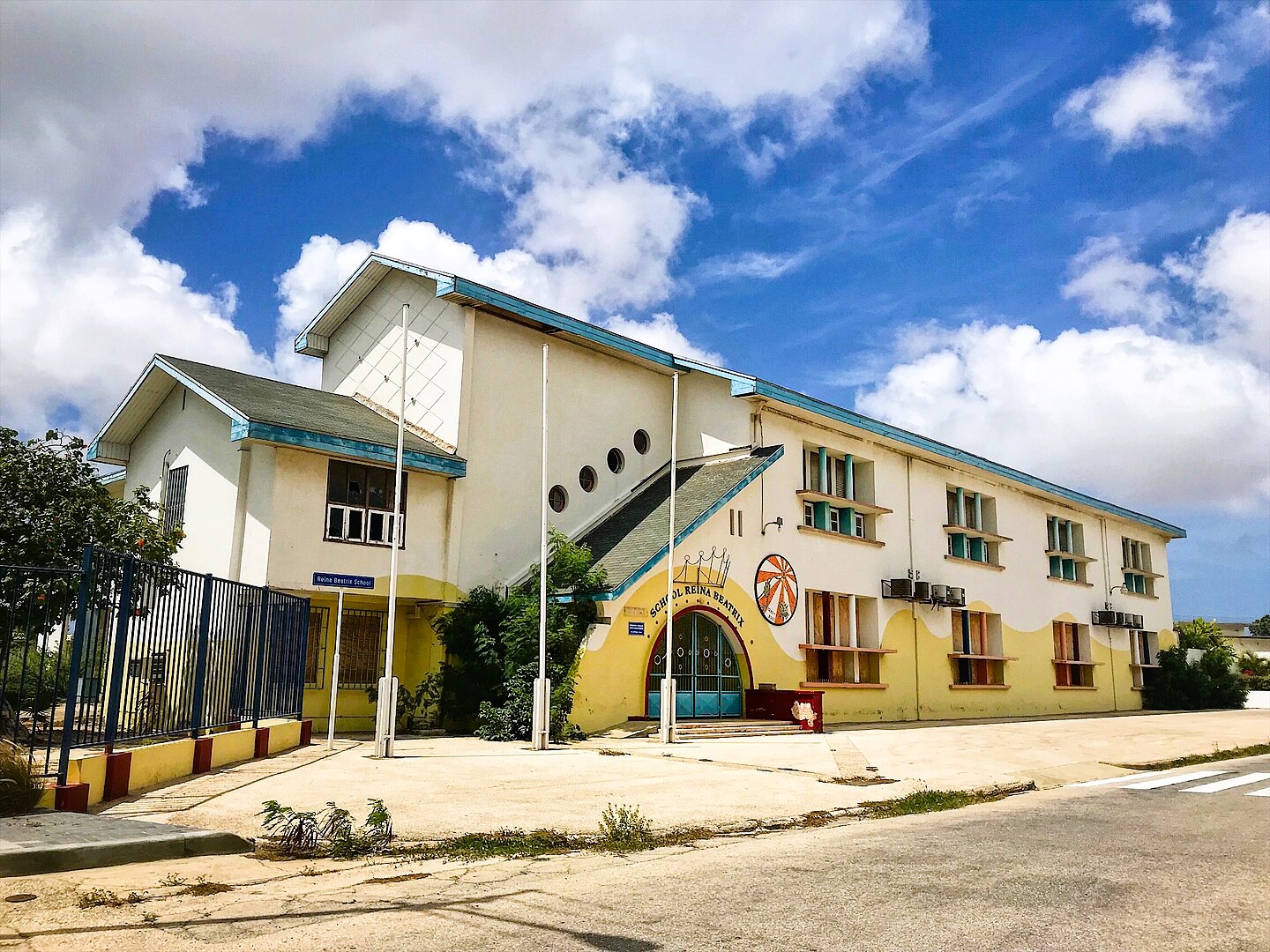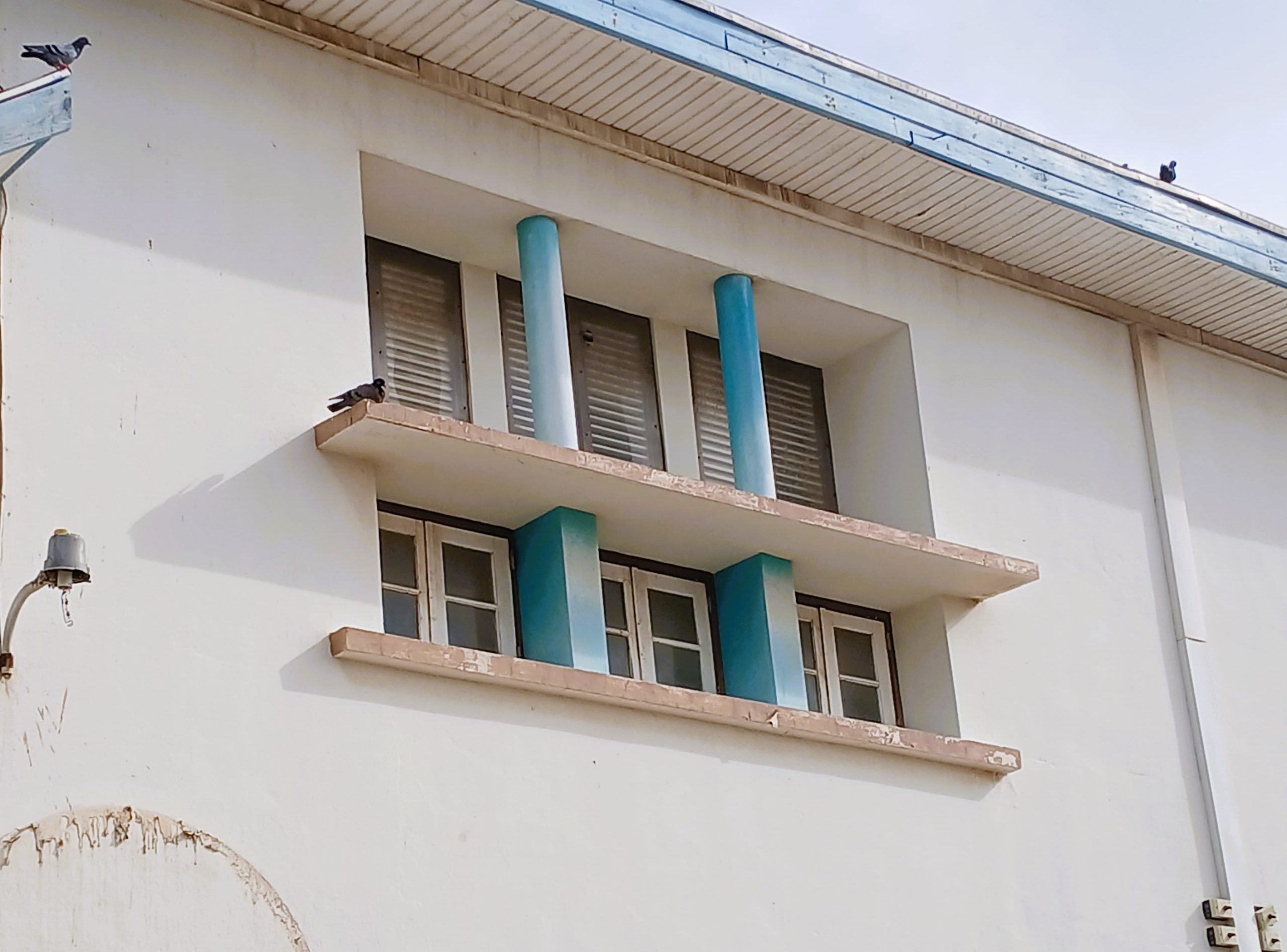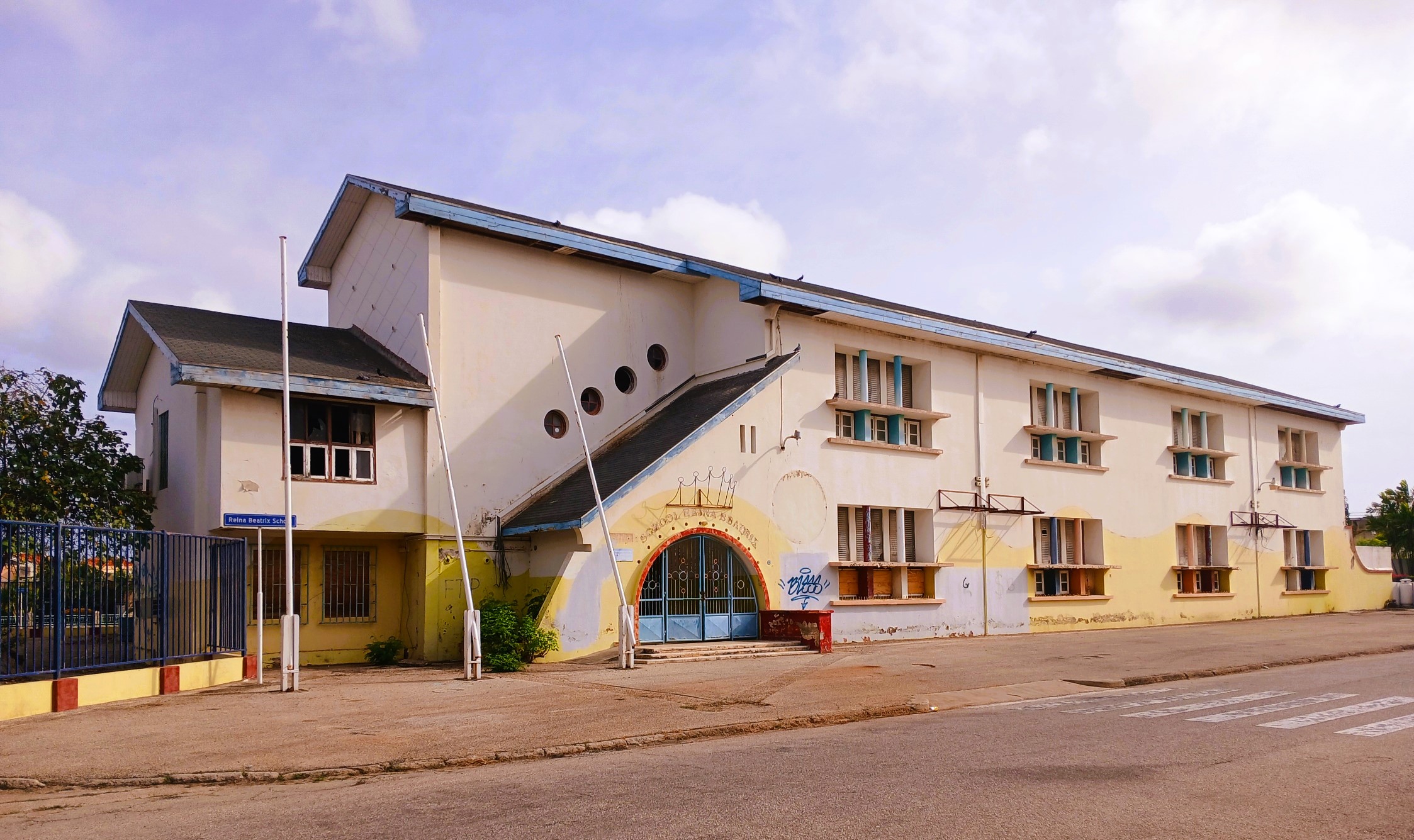| Address: | George Madurostraat 2 |
| Year Built: | 1951 |
| Monument status: | Protected |
| Ownership: | Government of Aruba |
Queen Beatrix School * 1951
Category: Oranjestad
The rapid growth of the population after the end of WW II prompted the construction of schools all over the island. The tropical style in the construction of the walls and windows of those buildings was aimed to letting the wind come in and keeping the sun out. Therefore, niches were created with recessed windows.
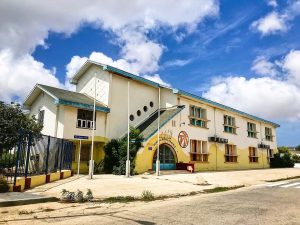
This type of construction was found in several buildings on the island, like the ‘Bestuurskantoor’ and schools like the Abraham de Veer School in San Nicolas.
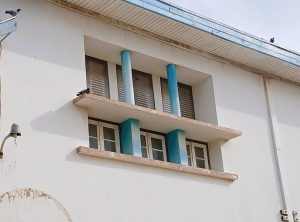
The pictures show the niches with deep lying windows.
The Queen Beatrix School building is no longer in use. The school has moved elsewhere. So has the adjacent Juliana School, public school for secondary education (‘MAVO’).
